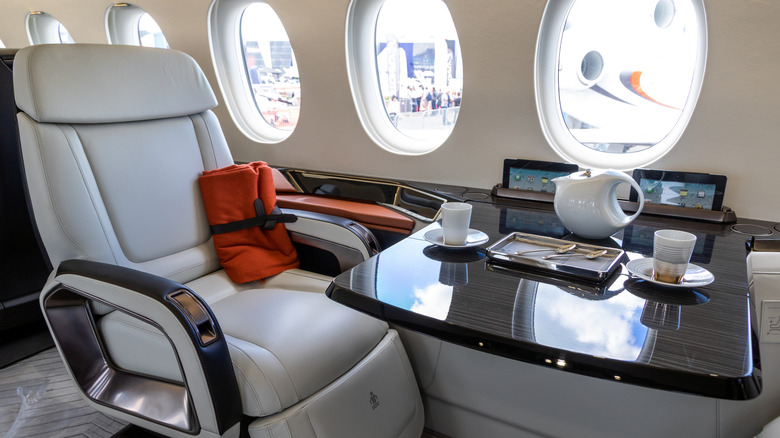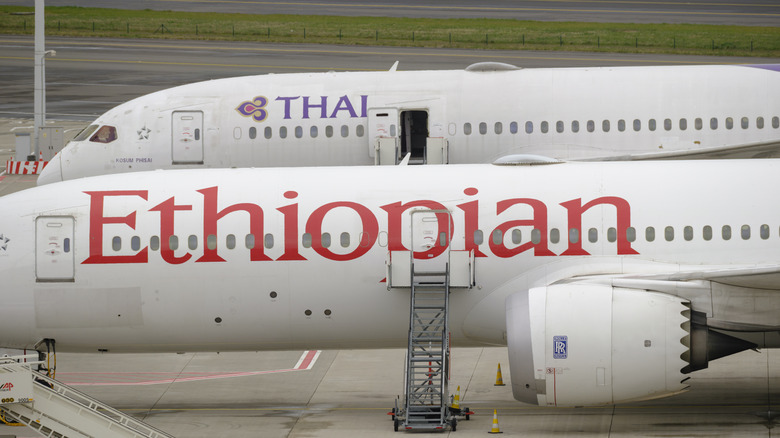How Private Jet Windows Are Different From Commercial Planes
Commercial flights tend to be light on some of the luxuries a private jet can offer. Although there is some astonishing tech powering your average workhorse of a commercial plane, such as the Airbus A320 or Boeing 737, they are just that: everyday fliers. Whereas, private jets often provide frills like bigger seats and larger windows. If you're lucky enough to fly in one, you could be treated to some absolutely stunning views through some marvelously designed windows.
One especially notable example is Dassault's Falcon 6X, with a magnificent galley skylight that sets it apart from any other aircraft in its class. Dassault boasts that it's "the first extra widebody business jet," and its cabin of over 40 feet long and 8 feet 6 inches across, is testament to that. It's very generously proportioned for a plane designed for up to 16 travelers. That small number of people typically wouldn't have almost 5,000 square inches of glass window shared between them, either.
It is equipped with 30 big windows, in all, and they're important for more than just ambience and visibility. Natural light has an enormous influence on the circadian rhythm of the body, because melatonin is released as a response to low levels of light to help prepare us for sleep. The dreaded jet lag is a result of our bodies essentially thinking it's a different time than it is, with this system becoming confused as time zones are crossed on long flights. As such, veteran long-distance flyers will know to bask in that light at an appropriate time depending on the direction they're flying, to help acclimatize to a new time zone and help minimize the ill-effects.
Why aircraft window sizes can differ so much
The Gulfstream G700's distinctive oval windows are iconic for their size, too: at 20.06 inches high and 28.1 inches wide, Gulfstream Senior Vice President Colin Miller boasted to BizAvIndia in 2020 that they were "the largest in the industry." In comparison, commercial aircraft windows are generally rather smaller. Previously, SlashGear has explored the reasons why airplane windows are round, and it largely revolves around the fact that this shape is better able to withstand the pressure of spending so much of their time 30,000 feet (give or take) in the air.
One reason for the common size disparity, Captain John Cox explains in USA Today's "Ask the Captain" segment, is that "the structure around the window is heavier. If you look at airplanes designed as freighters, they do not have windows. This is done to reduce the weight and maintenance costs." In short, it would be cheaper for commercial planes not to have any windows at all, and so the windows that passengers do have are functional enough to do the job — to allow in some light and to offer a view for scenic and safety purposes on the crews' end — and not really much beyond that. Commercial aircraft can still have generous, advanced windows, though. British Airways notes that Boeing's unique 787 Dreamliner, for instance, has the largest among commercial models, and that they can be controlled via a dial for the flyer's comfort. Windows of approximately 18.4 inches high and 10.7 inches wide, though, are a real luxury in the commercial sphere.

